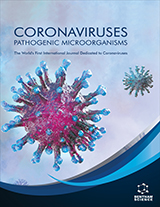Abstract
G Protein-coupled receptors (GPCRs) are cell membrane proteins that recognize specific chemical signals such as drugs and hormones and transduce these signals into cellular responses by activating G-proteins. As is the case for all newly synthesized proteins, GPCRs are subjected to conformational scrutiny at the endoplasmic reticulum prior to processing and trafficking to the cell surface membrane. Because of this stringent quality control screening mechanism, mutations that result in protein misfolding frequently lead to retention in the endoplasmic reticulum, aggregation or other misrouting and, eventually, to disease. This article reviews some patents and new therapeutic opportunities based on the misfolding and retention of otherwise functional GPCRs that represent promising approaches to correct conformational abnormalities leading to distinct disease states.
Keywords: G Protein-coupled receptor, pharmacological chaperones, pharmacoperones, gonadotropin-releasing hormone receptor, mutation, protein targeting, protein misrouting, lipophilic compounds, cells, biosynthetic, peptidomimetics, antagonists, agonists, Pompe disease, phenylketonuria, neurode-generative, Alzheimer's, Parkinson's, hypogonadotropic hypogonadism, ligands, lipid mediators, neurotransmitters, lipid bilayer, carboxyl-terminal sequence, ion channels, endoplasmic reticulum, retinitis pigmentosa, photoreceptor degeneration, puberty, reproductive, luteinizing hormone, hypoplasia, homeostasis, morbid obesity, hypocalciuric hypercalcemia, Hirschsprung's disease, aganglionic mega-colon, HIV infection, QUALITY CONTROL SYSTEM, Golgi apparatus, carbohydrates, plasma membrane, chaperone, nascent polypeptides, amino acid sequence, polyubiquitination/proteasome, olfatory receptors, degradation by drugs, cystic fibrosis transmembrane conductance regulator (CFTR), cystic fibrosis, rhodopsin gene, photoreceptor, polyols, hydration, heavy water, phenylbutyric acid, proteasomal degradation, lysosomes, hydrophilic arginine, heterozygous, proline, quinolones, urine production, cell death, vitamin A, salt bridge
 32
32





















